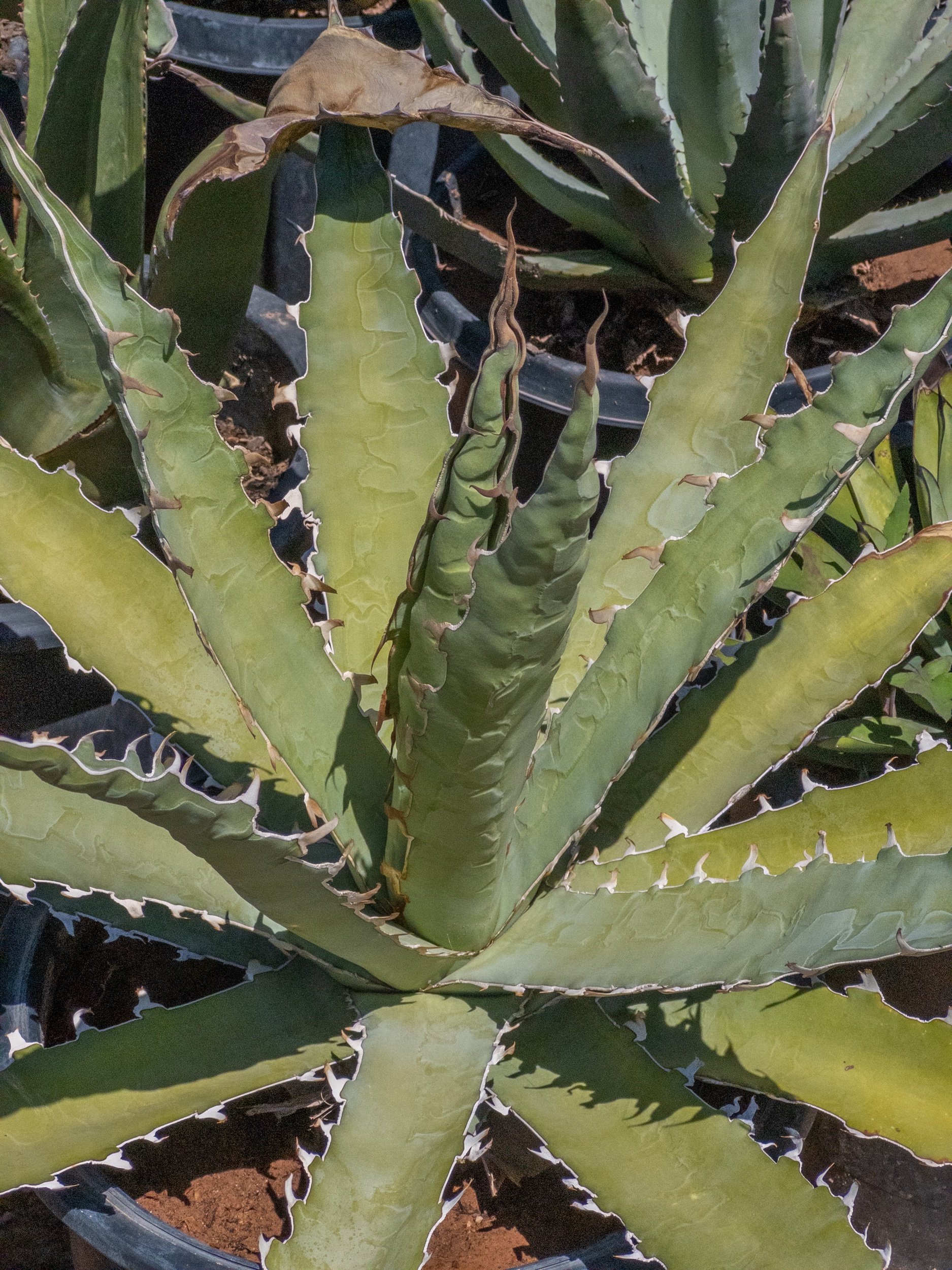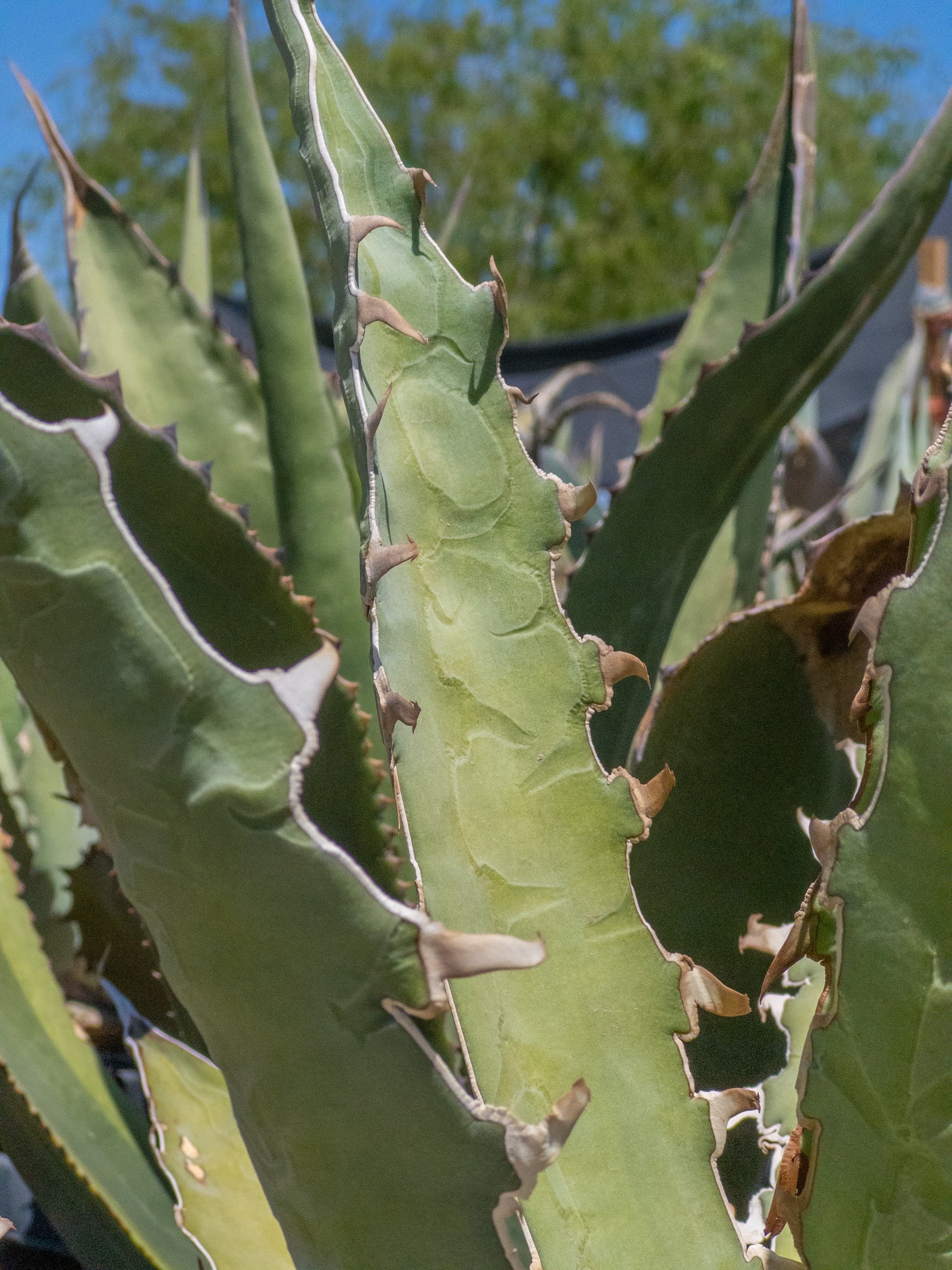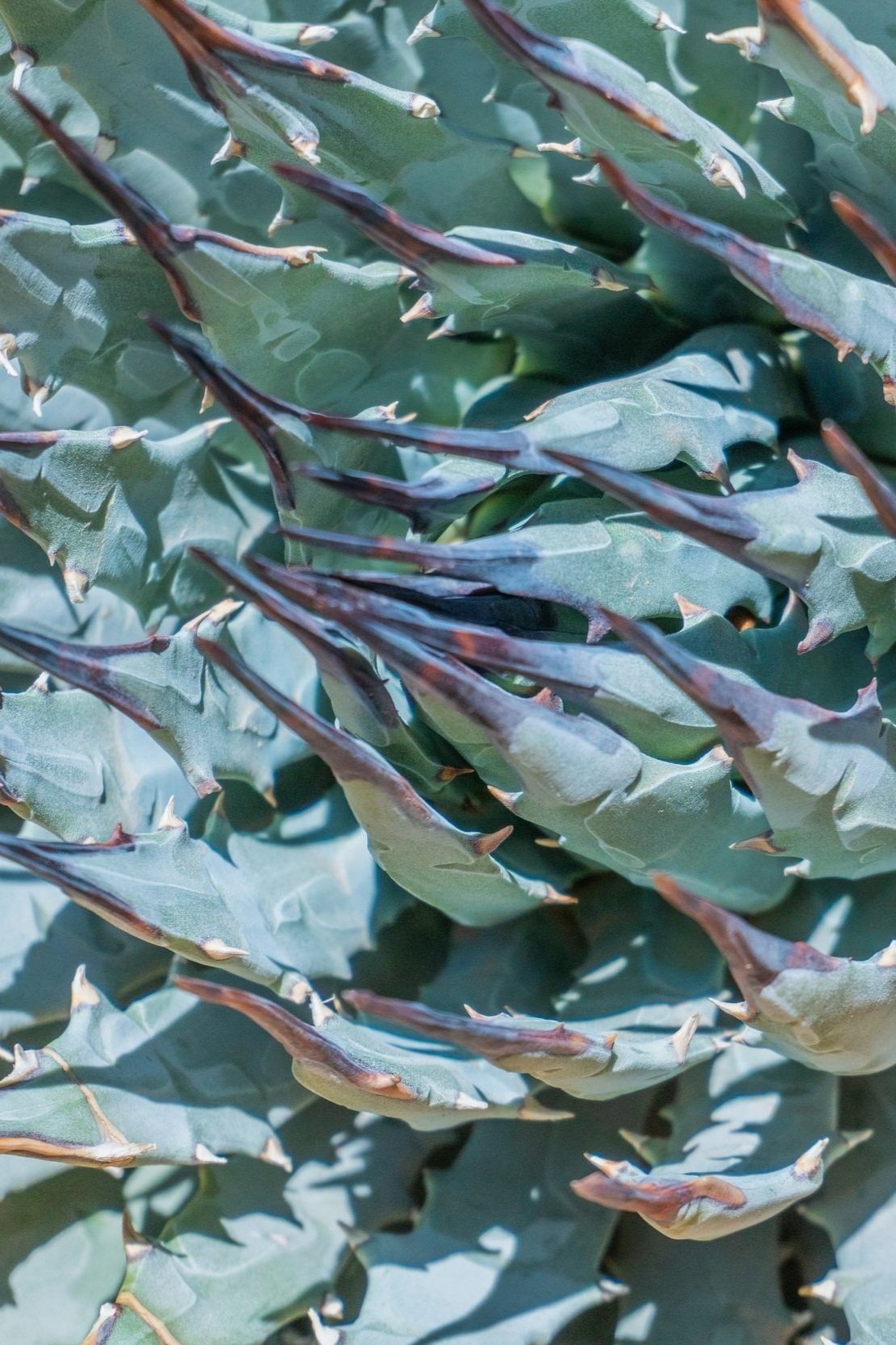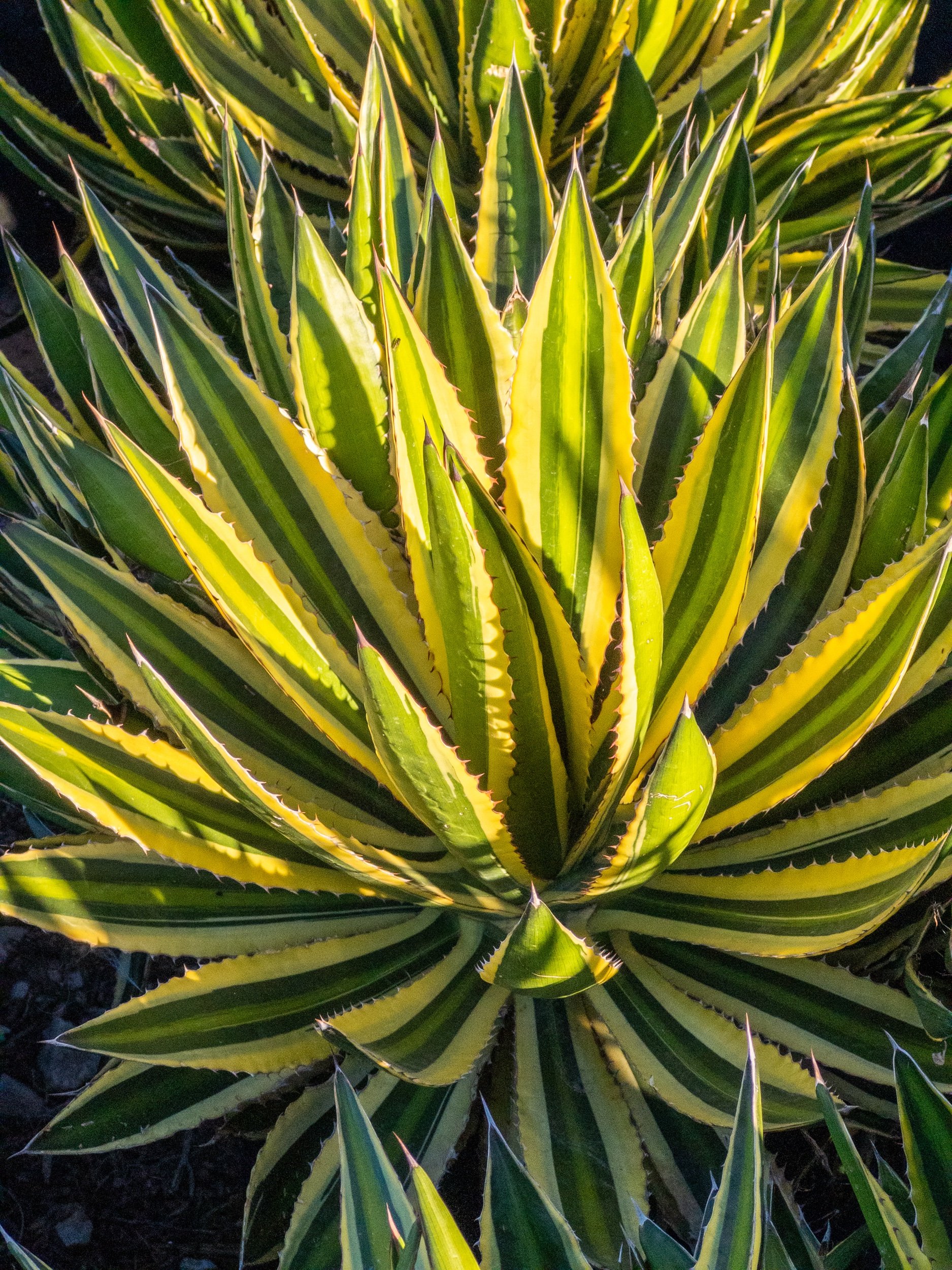 Image 1 of 5
Image 1 of 5

 Image 2 of 5
Image 2 of 5

 Image 3 of 5
Image 3 of 5

 Image 4 of 5
Image 4 of 5

 Image 5 of 5
Image 5 of 5






Agave Xylonacantha
Agave xylonacantha – Saw Leaf Agave: A Spiky Desert Maverick
Unleash the wild charm of the Agave xylonacantha, or Saw Leaf Agave, a compact succulent that’s equal parts rugged and refined. Native to eastern-central Mexico, this solitary stunner forms a sprawling rosette of pale gray-green leaves, growing 2-3 feet tall and 4-5 feet wide. Each lance-shaped leaf is a masterpiece, striped with subtle patterns and edged with irregular, almost papery, saw-toothed spines that curve like a desert wave—perfect for a bold, low-maintenance focal point.
Care Snapshot:
• Sun: Full sun is its fuel—6+ hours daily keeps its colors vivid and form dramatic. Light shade is tolerated but may soften its edge.
• Water: Drought-hardy—water deeply every 2-3 weeks in summer, letting soil dry out completely. In winter, water once a month or skip it entirely.
• Soil: Demands excellent drainage—cactus mix or rocky, sandy soil mimics its limestone slopes, preventing root rot.
Ideal for xeriscapes, rock gardens, or standout containers, this agave thrives in USDA zones 8-11, handling dry cold to 20°F (-6°C)—protect from wet freezes. After 10-20 years, it may send up a towering 10-20-foot spike of yellow-green flowers, a monocarpic finale with no offsets, so savor its quirky beauty while it lasts. Place away from paths; those spines are sharp, and sap can irritate pets or skin. Deer and rodent-resistant, it’s a hassle-free choice for tough landscapes.
Agave xylonacantha – Saw Leaf Agave: A Spiky Desert Maverick
Unleash the wild charm of the Agave xylonacantha, or Saw Leaf Agave, a compact succulent that’s equal parts rugged and refined. Native to eastern-central Mexico, this solitary stunner forms a sprawling rosette of pale gray-green leaves, growing 2-3 feet tall and 4-5 feet wide. Each lance-shaped leaf is a masterpiece, striped with subtle patterns and edged with irregular, almost papery, saw-toothed spines that curve like a desert wave—perfect for a bold, low-maintenance focal point.
Care Snapshot:
• Sun: Full sun is its fuel—6+ hours daily keeps its colors vivid and form dramatic. Light shade is tolerated but may soften its edge.
• Water: Drought-hardy—water deeply every 2-3 weeks in summer, letting soil dry out completely. In winter, water once a month or skip it entirely.
• Soil: Demands excellent drainage—cactus mix or rocky, sandy soil mimics its limestone slopes, preventing root rot.
Ideal for xeriscapes, rock gardens, or standout containers, this agave thrives in USDA zones 8-11, handling dry cold to 20°F (-6°C)—protect from wet freezes. After 10-20 years, it may send up a towering 10-20-foot spike of yellow-green flowers, a monocarpic finale with no offsets, so savor its quirky beauty while it lasts. Place away from paths; those spines are sharp, and sap can irritate pets or skin. Deer and rodent-resistant, it’s a hassle-free choice for tough landscapes.
Agave xylonacantha – Saw Leaf Agave: A Spiky Desert Maverick
Unleash the wild charm of the Agave xylonacantha, or Saw Leaf Agave, a compact succulent that’s equal parts rugged and refined. Native to eastern-central Mexico, this solitary stunner forms a sprawling rosette of pale gray-green leaves, growing 2-3 feet tall and 4-5 feet wide. Each lance-shaped leaf is a masterpiece, striped with subtle patterns and edged with irregular, almost papery, saw-toothed spines that curve like a desert wave—perfect for a bold, low-maintenance focal point.
Care Snapshot:
• Sun: Full sun is its fuel—6+ hours daily keeps its colors vivid and form dramatic. Light shade is tolerated but may soften its edge.
• Water: Drought-hardy—water deeply every 2-3 weeks in summer, letting soil dry out completely. In winter, water once a month or skip it entirely.
• Soil: Demands excellent drainage—cactus mix or rocky, sandy soil mimics its limestone slopes, preventing root rot.
Ideal for xeriscapes, rock gardens, or standout containers, this agave thrives in USDA zones 8-11, handling dry cold to 20°F (-6°C)—protect from wet freezes. After 10-20 years, it may send up a towering 10-20-foot spike of yellow-green flowers, a monocarpic finale with no offsets, so savor its quirky beauty while it lasts. Place away from paths; those spines are sharp, and sap can irritate pets or skin. Deer and rodent-resistant, it’s a hassle-free choice for tough landscapes.





